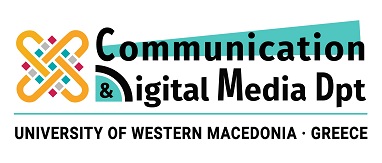CDM JMO2 CRISIS FRAMES: A EUROPEAN PERSPECTIVE
LEVEL OF STUDY: UNDERGRADUATE
COURSE UNIT CODE: CDM JMO2
SEMESTER: 7th
COURSE TITLE: CRISIS FRAMES: A EUROPEAN PERSPECTIVE
TEACHING WEEKLY HOURS: 3 H/W LECTURES
ECTS: 5
COURSE TYPE: OPTIONAL
TEACHING AND EXAM LANGUAGE: GREEK
COURSE DELIVERY TO ERASMUS STUDENTS: YES (in English)
This course aims to analyse the various frames and communication strategies used by different actors across several types of crises. Emphasis will be placed on how EU institutions, national government authorities, local governments and regional authorities, politicians, MEPs, prime ministers-presidents, mayors across the EU have communicated during crises like the health-related crisis, terrorist attacks, and natural disasters. The course will also shed light on how media frame crisis events such as the EU refugee crisis, political scandals, as well as other anthropogenic crises or natural disasters. A comparative analysis of media frames utilised across European countries will also be analysed especially for transboundary crises. Topics related to disaster and crisis journalism, crisis reporting, and visual coverage of crises will also be discussed. By following an inclusive approach, emphasis will be placed on the voices, stories, narratives, coping strategies, crisis emotions, sensemaking processes of the most affected actors during crises, victims and victim support organisations, citizens of affected areas, representatives of local areas and businesses, NGOs, and volunteers. In addition, an important part of the course is dedicated to risk communication and will analyze the various risk communication models, the factors that affect risk perceptions and will also shed light on how various European agencies and organizations communicate publicly risks. Moreover, crisis leadership will be an integral part of the course along with the issues of misinformation, disinformation, malinformation, and fake news on the internet during times of crises. The course is part of the Jean Monnet Chair in Risk and Crisis Communication Management in the EU (2022-2023).
Upon successful completion of the course students will be able to:
- Identify the various forms of framing that the media utilize during crisis and disaster coverage.
- Interpret the response of public leaders and figures of Europe during crisis and disasters based on crisis leadership models.
- Compare various frames by media originating from different European countries during transboundary crises and to identify common practices and differences.
- To formulate appropriate risk communication strategies for different risk types.
- Analyze the dimensions of crisis journalism during major crises and disasters in Europe.
- To design a European crisis framing model utilized by media during natural disasters.
- To effectively identify fake news and be able to counterattack disinformation and misinformation regarding crisis and natural disasters
Innovative student-based learning and teaching methods will be used such as decision-focused case studies, role-playing simulation of crisis, simulations using social media, participation as members of crisis response teams, delivery of emergency messages to key stakeholders through videos or social media messages, holding press conferences, conducting interviews with journalists, writing press releases, group assignments, and active participation in research projects. Students will also be encouraged to participate in various research activities of the Chair such as collecting data from recent crises-disasters, conducting content analysis of data and interviews, and administering survey questionnaires, etc. Moreover, the course will be enriched with guest lectures from academics, scholars, specialists and experts from Greek and other European organizations and higher education institutes.
